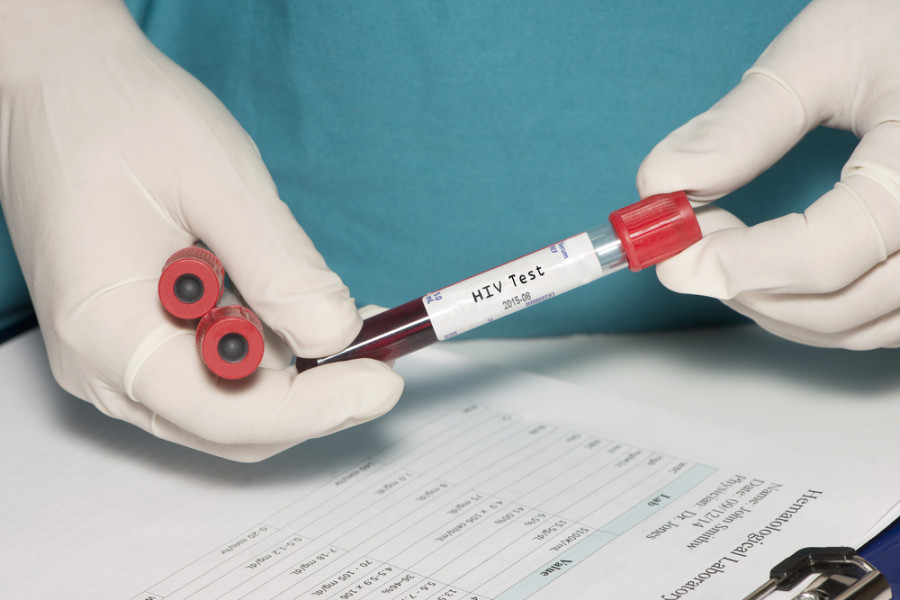Health
Greater urgency required to detect all hidden HIV cases to meet UN 2020 goals
Index testing or HIV tests for children, spouse, sexual partners, siblings and parents is crucial, doctors say
Arjun Poudel
When Suntali from Sunakothi of Lalitpur visited Patan Hospital five days ago, her chief complaint was continued fever. A wound on her back was also bothering her for quite some time, she said.
After a series of tests, doctors found that the 65-year-old woman, who wished to be identified only by her first name, was infected with HIV. Suntali’s husband died when she was pregnant with her son.
“I thought my husband died of a disease that could not be diagnosed,” she said. “Now my son is 22 years old and I am diagnosed with HIV.”
Had she not visited the hospital, there were chances her HIV status would not have come to her and the authorities’ notice. She is currently receiving treatment at Sukraraj Tropical and Infectious Disease Hospital in Teku.
Mahalaxmi, 48, of Kavrepalanchok has been admitted to the same hospital.
Her husband Dhan Bahadur has been receiving antiretroviral treatment for the last six years. She was diagnosed with HIV infection only recently. She got the virus from unprotected sex. “She knew my HIV status and the type of treatment I have been receiving,” said Dhan Bahadur. “I did not take her for HIV infection check-up as we were concerned that we could face discrimination if she was dignosed with HIV.”
Like Suntali and Mahalaxmi, according to estimates, there are around 8,000 people across the country who have been infected with HIV but are either yet to be diagnosed or yet to come in contact with hospitals.
Such hidden cases are a cause of concern, say officials, as it could mean Nepal could miss the UNAIDS 2020 goal of 90-90-90.
UNAIDS 90-90-90 is an ambitious treatment target to help end the AIDS epidemic, for which, by 2020, 90 percent of people should know their HIV status; 90 percent of people with diagnosed HIV infection should receive sustained antiretroviral therapy; and 90 percent of all people receiving antiretroviral therapy should have viral suppression.
"The deadline is very close and thousands of people are still hidden," Dr Anup Bastola, chief consultant at ART clinic at the Sukraraj Tropical and Infectious Hospital, told the Post. "Had we carried out the index testing, these two cases would have been diagnosed years ago.”
According to the National Center for AIDs and STD Control, 29,944 people are estimated to be living with HIV in Nepal. Among them, 21,388 people have been diagnosed so far.
Bastola said concerned authorities should focus on index testing, which means family members—children, spouse, sexual partners, siblings and parents—all should undergo HIV tests.
“We have to work on war footing to find out all the cases which are hidden if we want to meet the UN target," said Bastola.
Even if the first two 90-90 goals are meat, Nepal will struggle to meet the third target of viral suppression, as of the five viral load testing machines throughout the country, only one is in operation.
Similarly, people living with HIV have also been deprived of CD-4 count service, for a long time.
Of the 33 CD-4 count centres across the country, only 18 are in operation.
CD4 count is a test to measure the number of CD4 cells—a type of white blood cell called T-cells-that move throughout the body to find and destroy bacteria, viruses, and other invading germs. CD4 count is a must to start antiretroviral medicines for people living with HIV and to check the effectiveness of the medicines they are taking. An HIV patient must undergo a CD4 test for the doctor to be able to prescribe antiretroviral medicines.
Dr Anuj Bhattachan, director at the National Center for Aids and STD Control, concedes the lacking and challenges when it comes to meeting the UNAIDS targets.
"Yes, meeting the UNAIDS goals seems challenging in the present context," Bhattachan told the Post. "But we have been working to bring targeted intervention measures to meet the targets."
He said that his office would coordinate with all the stakeholders to launch effective programmes targeting risk groups—migrant workers, sex workers, drug users and other vulnerable groups.




 17.12°C Kathmandu
17.12°C Kathmandu














